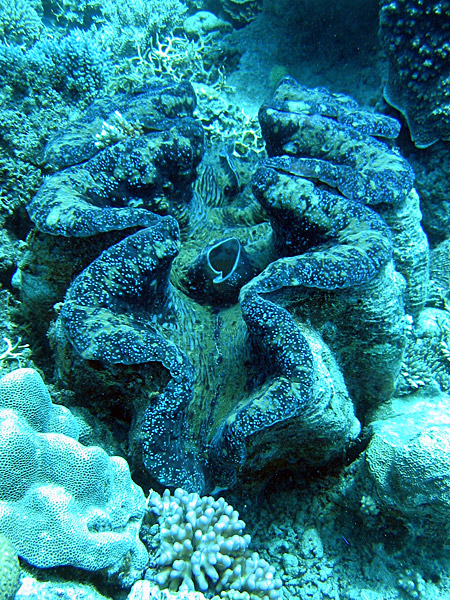It's a myth that if a scuba diver spies a glimmering pearl inside a giant clam and reaches in to steal it his or her arm will be grabbed by the slamming jaws of the twin-shelled mollusc. Giant clams can grow to over a metre long and they do make pearls but it is virtually impossible to get yourself trapped inside one.
But giant clams have hit the science headlines recently, with the discovery a new species living in the Red Sea. This is the first giant clam discovery in twenty years, bringing the total number of species in the world to eight, thanks to an international team of researchers led by Claudio Richter of the Alfred-Wegener-Institute for Polar and Marine Research in Germany.
 And what's more, this new clam has uncovered some of the oldest evidence yet of mankind's plundering of the oceans.
And what's more, this new clam has uncovered some of the oldest evidence yet of mankind's plundering of the oceans.
The new species, tridacna costata, is incredibly rare today, one reason why it had been overlooked for so long, but it has now been shown to be a separate species from studies of its shape and also its genetics.
Researchers have also looked back in time at the fossil record and discovered that this species used to be incredibly abundant. Around 125 thousand years ago, Tridacna costata made up around 80% of the species of giant clam living in the Red Sea. Now it makes up less than 1%.
And it seems that possible culprits for the clam's massive decline could be ancient hunter-gatherers, who may well have taking a liking to these large, nutritious shellfish, which are extremely easy to harvest because they don't run away! The timing of the demise of these giant clams coincides rather suspiciously with when it is thought early Homo sapiens began migrating out of Africa. Not just that, but the clams used to be much larger than they are today, pointing an even stronger finger of blame at mankind because is suggests that big specimens were wiped out a long time ago by our ancient ancestors.
- Previous Cooperating Bats
- Next Cigs don't help colds









Comments
Add a comment